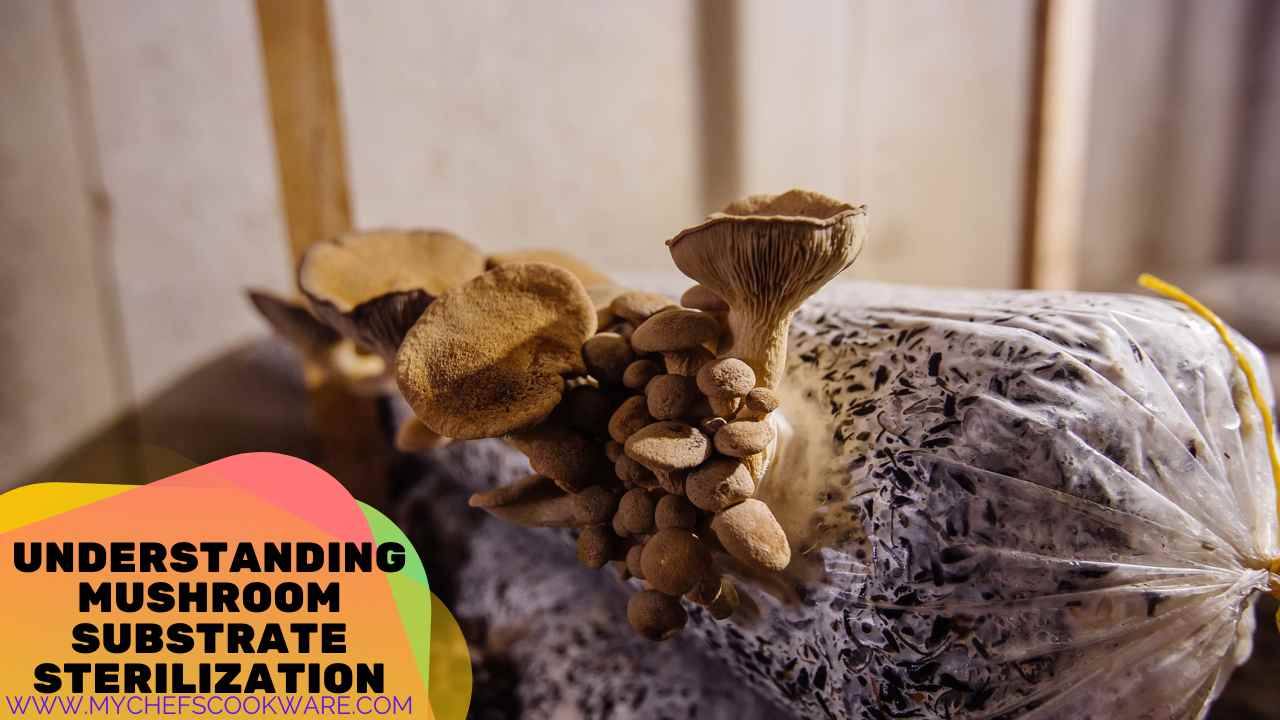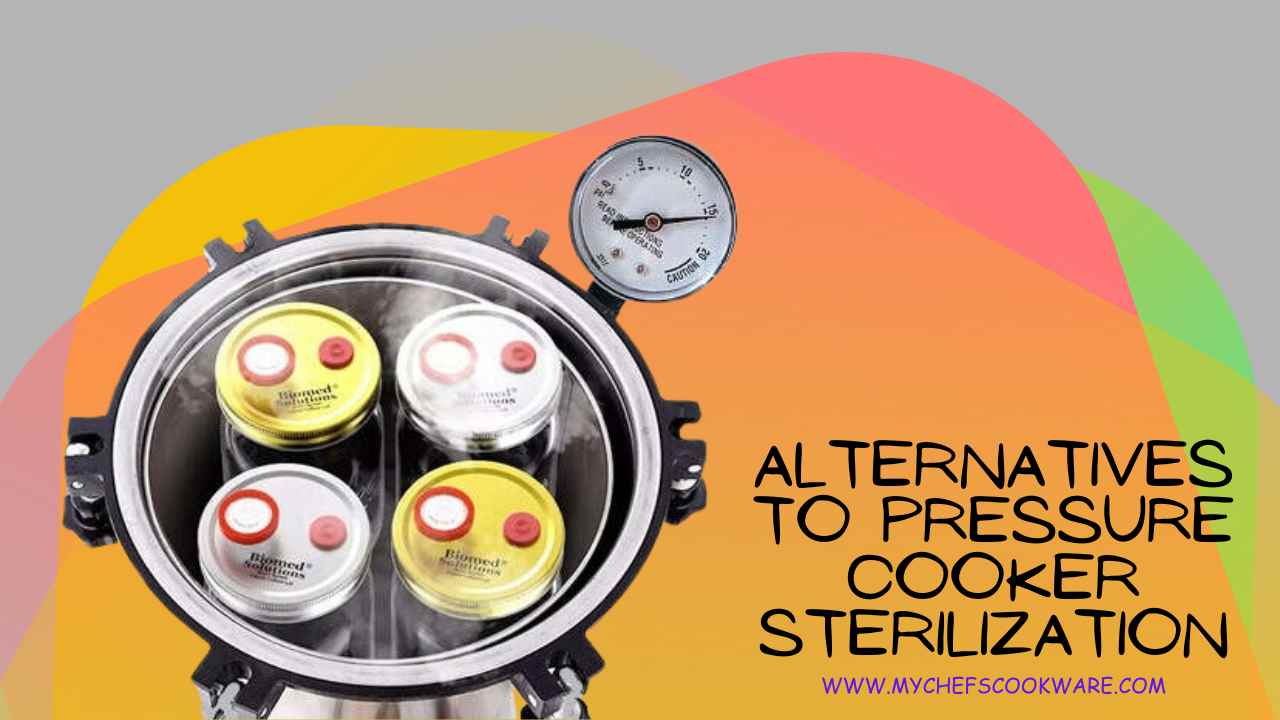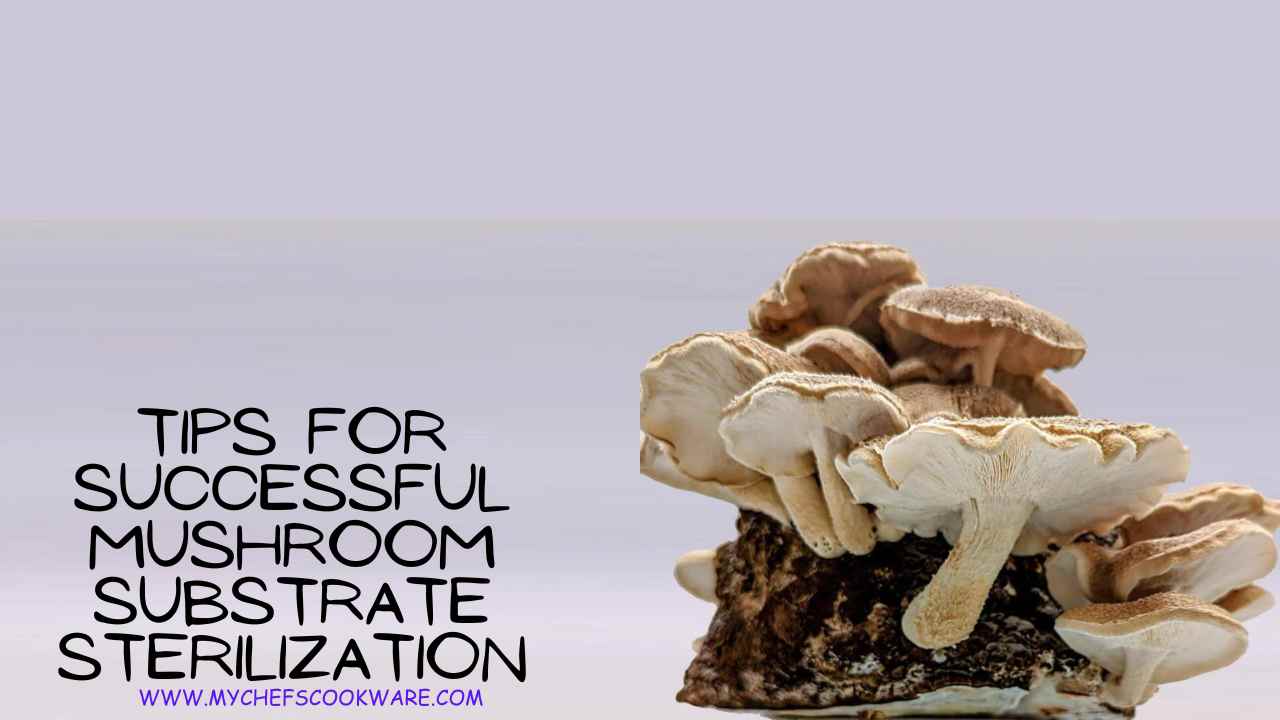Mushroom cultivation is an increasingly popular hobby for many people, whether for personal consumption or commercial purposes. One crucial aspect of successful mushroom cultivation is the sterilization of the substrate used to grow the mushrooms. Sterilization eliminates any potential contaminants that could hinder mushroom growth or even lead to failure. However, not everyone has access to a pressure cooker, which is the traditional method for sterilizing mushroom substrate. In this article (How to Sterilize Mushroom Substrate Without a Pressure Cooker), we will explore alternative methods for sterilizing mushroom substrates without a pressure cooker.
Understanding Mushroom Substrate Sterilization

Mushroom cultivation requires a sterile environment to achieve successful growth, which is where mushroom substrate sterilization plays a crucial role. This section will delve into what mushroom substrate sterilization entails, its significance in mushroom cultivation, and the conventional method of sterilizing mushroom substrate with a pressure cooker.
Mushroom substrate sterilization involves eradicating bacteria, fungi, or any other microorganisms present in the substrate material that supports mushroom growth, such as sawdust, straw, or compost. Sterilization is vital because any contaminants in the substrate can compete with the mushroom mycelium for nutrients, impeding growth or causing crop failure.
Sterilization is particularly critical in mushroom cultivation since the mycelium, which is the vegetative part of the mushroom, is highly susceptible to contamination. The presence of contaminants can stunt the mushroom’s growth, alter its shape or even lead to its death.
The traditional way of sterilizing mushroom substrates is by using a pressure cooker. The pressure cooker utilizes steam and pressure to generate high temperatures that eliminate all microorganisms present in the substrate. Additionally, the high temperatures break down complex organic compounds in the substrate, making them more accessible to the mycelium.
To sterilize mushroom substrate with a pressure cooker, the substrate is enclosed in a bag or jar and sealed. The container is then placed inside the pressure cooker, water is added to produce steam, and the pressure cooker is heated to a specific temperature and pressure for a certain period to guarantee complete sterilization of the substrate.
Alternatives to Pressure Cooker Sterilization (How to Sterilize Mushroom Substrate Without a Pressure Cooker)

Mushroom cultivation requires a sterile environment to ensure successful growth. While a pressure cooker is the conventional method of sterilization, it may not always be available or convenient. In this section of the article, we will explore alternative methods for sterilizing mushroom substrates without a pressure cooker.
Steam Sterilization
Steam sterilization involves using a large pot with a tight-fitting lid and a steaming rack. The substrate is placed in a bag or jar, and then the container is sealed. The pot is filled with water, and the steaming rack is placed inside. The bag or jar is then placed on the rack and covered with the lid. The pot is heated until steam forms, and then the heat is reduced to maintain the steam for the recommended time.
Pros:
- Effective sterilization method
- Easy to do
- Minimal equipment required
Cons:
- Can be time-consuming
- Requires close attention to prevent the pot from boiling dry
Oven Sterilization
Oven sterilization involves placing the substrate in a heat-resistant container and baking it at a specific temperature for a certain amount of time. The oven must be preheated and should reach and maintain the appropriate temperature throughout the sterilization process.
Pros:
- More convenient than other methods
- Suitable for a range of substrate materials
Cons:
- It can be tricky to ensure that the substrate is evenly heated
- Some substrate materials may not be suitable for this method
Microwave Sterilization
Microwave sterilization involves placing the substrate in a microwave-safe container, adding water, and then microwaving it at a high power level for several minutes. This method is the quickest of the three alternatives and is suitable for small amounts of substrate.
Pros:
- Quick sterilization method
- Minimal equipment required
Cons:
- Challenging to determine appropriate microwave power and time for different substrate materials
- Risk of overheating and uneven sterilization
Tips for Successful Mushroom Substrate Sterilization

Sterilization is a critical step in mushroom cultivation, and ensuring that it is done correctly is essential for success. In this section, we will discuss some tips for successful mushroom substrate sterilization.
Importance of Cleanliness in Sterilization
One of the most important factors in successful sterilization is maintaining a clean environment. Any contaminants in the substrate or on the sterilization equipment can compromise the effectiveness of the sterilization process. Before beginning sterilization, it is essential to clean all equipment, tools, and surfaces that will come into contact with the substrate thoroughly.
Tips for Maintaining a Sterile Environment during Sterilization
- Wear gloves and a face mask to prevent contamination from skin and respiratory droplets.
- Work in a clean and well-ventilated area to minimize the risk of airborne contaminants.
- Use a sterile container for the substrate, such as a jar or bag, and make sure it is sealed correctly to prevent contamination.
- Use a thermometer to ensure that the temperature is at the correct level throughout the sterilization process.
- Avoid opening the container during sterilization, as this can introduce contaminants.
Common Mistakes to Avoid During Sterilization
- Overcrowding the sterilization container can prevent heat from reaching all parts of the substrate, leading to incomplete sterilization.
- Failing to maintain the correct temperature for the recommended time can also result in incomplete sterilization.
- Touching the inside of the container or sterilization equipment with unsterilized hands can introduce contaminants.
- Failing to seal the container correctly can also introduce contaminants.
Read More Can You Use Plastic Bags in a Pressure Cooker?
Conclusion
To sum up, mushroom substrate sterilization is a crucial step for successful mushroom cultivation. It involves removing microorganisms present in the substrate to avoid contamination and provide the best-growing conditions for the mycelium. Although a pressure cooker is the conventional sterilization method, there are other ways to sterilize mushroom substrates, such as steam, oven, and microwave sterilization. Cleanliness plays a vital role in the sterilization process, and maintaining a sterile environment is crucial. Adhering to the provided tips, including wearing gloves and a face mask, using a sterile container, and avoiding mistakes like overcrowding, can help growers achieve effective sterilization and ensure a prosperous mushroom crop.

